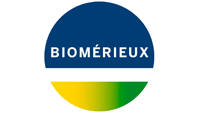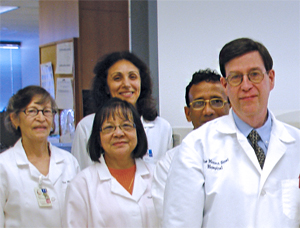Antibiotic resistance is now recognized worldwide as a major healthcare threat. Faced with the increasing emergence and spread of MDROs and the lack of new antibiotics, healthcare providers need effective tools - and actionable results – to face the resistance challenge every day.
Relevant antibiotic prescribing
Up to 50% of antibiotics are prescribed unnecessarily or are not optimally effective as prescribed.1,2
Today, fast diagnostic tests can help you make the right decision for antibiotic treatment.
For example: Antibiotics or no antibiotics?
- Procalcitonin (PCT) levels correlate with presence and severity of bacterial infection, providing useful, within-the-hour guidance on when to initiate and/or adjust antibiotic therapy, as well as when to continue/stop treatment earlier.3
In just 5-10 minutes, Strep A or Influenza rapid tests can help physicians prescribe antibiotics only when necessary and reduce the spread of bacterial resistance.
Today, you can get same-day identification and susceptibility test (ID/AST) results to help you prescribe the right antibiotic for the right patient.
For example: Same-day results for relevant antibiotic therapy
- Cutting the traditional time-to-result for bacterial ID by hours, MALDI-TOF MS* technology enables accurate identification of microorganism species within minutes. Then susceptibility testing systems take over to determine and interpret susceptibility results in as little as 5-8 hours4, ensuring that the most relevant antibiotic is prescribed
| “In our institution, [faster reporting of susceptibility results] has made a huge impact on patient care. The clinicians, especially in Infectious Diseases, now know that when they make their rounds in the afternoon, new data on their patients are already available.”
Vincent J. LaBombardi, Ph.D. Director of Microbiology, |
Preventing HAIs and spread of bacterial resistance
When you need to:
- Reduce the risk of healthcare-associated infections (HAIs)
- Rapidly contain the spread of multi-drug resistant organisms (MDROs)
- Make patient isolation decisions…
Innovative, more rapid screening methods are available to help you act faster
For example: Reducing time-to-result for MDRO screening
- Easy-to-read chromogenic media provide faster results than traditional media through the simultaneous culture and identification of the most significant MDROs: methicillin-resistant Staphylococcus aureus (MRSA), Extended-spectrum beta-lactamases (ESBL), Carbapenemase-producing Enterobacteriaceae (CPE) and Vancomycin-resistant enterococci (VRE).
Automated tests simplify diagnosis of C. difficile infection (CDI) and help prevent outbreaks
For example: Managing Clostridium difficile infection better
- Reduce the time needed to detect and treat C. difficile infections by choosing a global diagnostic solution that covers automated first-line GDH testing and toxin EIA immunoassays, as well as culture and molecular tests. Comply with the most recent guidelines, which recommend the use of a two- or three-step protocol for optimal patient treatment and management.5,6
Regular air, surface and water controls help prevent microbial contamination in healthcare facilities, protecting both patients and healthcare providers.
For example: Proactively implement environmental controls
- Air-borne contamination monitoring, water sampling, surface controls and equipment decontamination limit the risk of HAI, prevent the emergence and transmission of MDROs, and help reduce associated healthcare costs.
bioMérieux – your partner in fighting antibiotic resistance
With extensive expertise in microbiology and susceptibility testing, bioMérieux has a long-term commitment to fighting antibiotic resistance. We work closely with our healthcare partners to provide solutions that can help you manage antibiotic resistance more efficiently.
Our Solutions
- Strep A / Flu results in 5-10 minutes with our easy-to-use, first-line rapid tests:
- Comprehensive solution for C. difficile infection management
- VIDAS® C. difficile GDH - GDH enzyme immunoassay (EIA) for first-line testing
- VIDAS® C. difficile Toxin A&B - sensitive toxin EIA to confirm positive results
- chromID® C. difficile – chromogenic culture media to determine susceptibility and perform additional typing studies for outbreak investigations.
- Optimized screening of MDROs
- chromID® range – chromogenic media for the identification of major MDROs: MRSA, ESBL, VRE, CPE, OXA-48…
- Preventing environmental contamination
- Environmental Control solutions - from air and water borne contamination monitoring to surface controls and equipment decontamination
- Aid in the diagnosis of severe bacterial infection, or patients at risk of developing sepsis, in 20 minutes:
- VIDAS® B.R.A.H.M.S PCT™**
- Identification of organism species in minutes not hours using MALDI-TOF mass spectrometry technology
- VITEK® MS
- Faster reporting of AST results - Fully automated ID/AST system offering clinically relevant microbial identification and susceptibility testing results with reduced response times
- VITEK® 2
* MALDI-ToF MS: Matrix Assisted Laser Desorption Ionization Time-of-Flight mass spectrometry
** VIDAS® B.R.A.H.M.S PCT™ supports the clinical management of sepsis, and procalcitonin cut-off thresholds are an aid to the clinical management of lower respiratory tract infections, but under no circumstances replace clinical judgment and thorough clinical assessment of patients.
1. MMWR Morb Mortal Wkly Rep 2011;60:1153-6.
2. http://www.cdc.gov/getsmart/healthcare/learn-from-others/factsheets/anti...
3. Schuetz P, et al. Clin Infect Dis. 2012;55(5):651-62
4. Rommier et al. Poster C-123, ASM Orlando, May 2006



